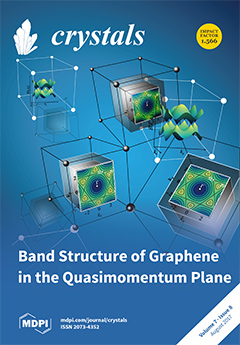Two new Co(II) complexes, [{Co(L)}
2{Co(Pic)
2(CH
3OH)
2}] (
1) and [{CoL(
μ-OAc)}
2Co] (
2), where H
2L = 2,2′-[Ethylenedioxybis(nitrilomethylidyne)]dinaphthol, were designed, synthesized and characterized by elemental analysis, FT-IR spectra, UV-Vis spectra,
[...] Read more.
Two new Co(II) complexes, [{Co(L)}
2{Co(Pic)
2(CH
3OH)
2}] (
1) and [{CoL(
μ-OAc)}
2Co] (
2), where H
2L = 2,2′-[Ethylenedioxybis(nitrilomethylidyne)]dinaphthol, were designed, synthesized and characterized by elemental analysis, FT-IR spectra, UV-Vis spectra, and X-ray crystallography. Complex
1 consists of two [CoL] and one [Co(Pic)
2(CH
3OH)
2] (Pic = picrate) units and in the [CoL] unit, the Co(II) atom is tetra-coordinated with a slightly distorted square-planar geometry. In the [Co(Pic)
2(CH
3OH)
2] unit, the Co(II) atom is hexa-coordinated with a slightly distorted octahedral geometry. Meanwhile in complex
2, two acetate ions coordinate to three Co(II) atoms through Co-O-C-O-Co bridges and four
μ-naphthoxo oxygen atoms from two [CoL] units also coordinated to the central Co(II) atom. Thus, complex
2 has two distorted square pyramidal coordination geometries around the terminal Co(II) atom and an octahedral geometry around the central Co(II) atom. The supramolecular structures of complex
1 is a 3D-network supramolecular structure linked by C-H···O hydrogen bonds and π···π stacking interaction, but complex
2 possesses a self-assembled 2D-layer supramolecular structure linked by C-H···π and π···π stacking interactions. The structure determinations show that the coordination anions are important factors influencing the crystalline array.
Full article





